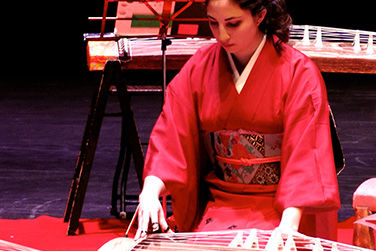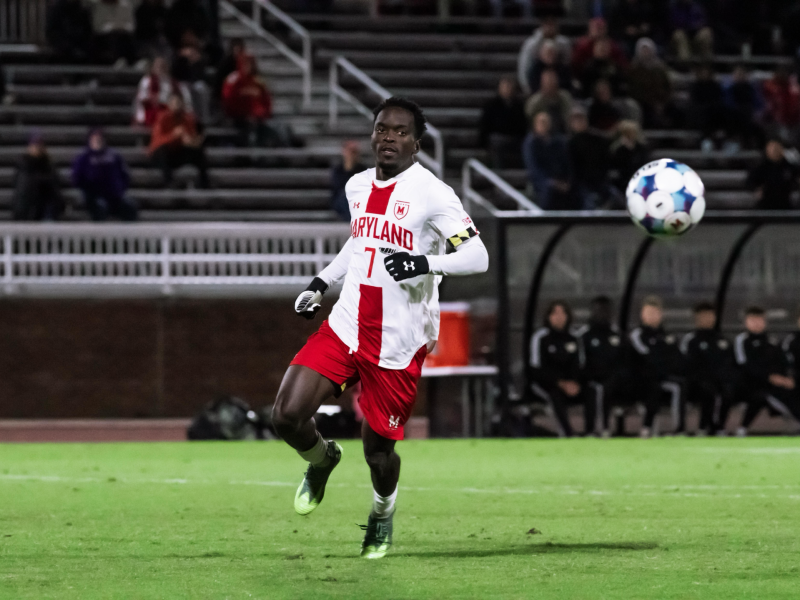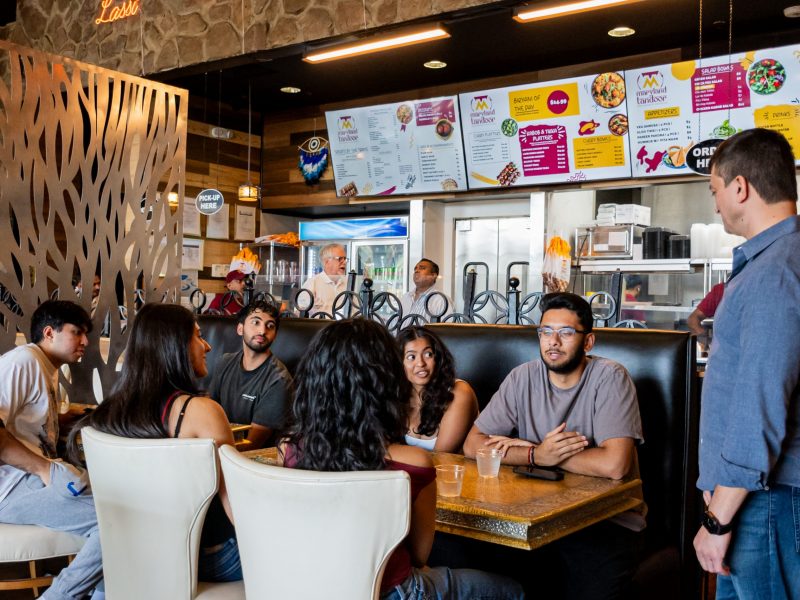
koto ensemble
The sounds of plucking strings, crashing cymbals and beating drums tickled the ears of about 200 students, faculty and community members sitting in the Dekelboum Concert Hall in the Clarice Smith Performing Arts Center on Monday night.
The music school held a concert to showcase this university’s Japanese Koto Ensemble and Korean Percussion Ensemble and the ensemble members’ accomplishments throughout the fall semester.
Each ensemble comprises graduate and undergraduate students who are enrolled in one of four specific music school classes, professor Lawrence Witzleben said at the beginning of the concert.
The Koto Ensemble performed three songs, the first of which was a medley of older Japanese songs, said Nathanial Gailey-Schiltz, an ethnomusicologist in the graduate program.
Gailey-Schiltz and Kyoko Okamoto, the Japanese Koto Ensemble director, led the 14 other students during the performance. Each performer played a koto, a traditional Japanese stringed instrument that has a long, wooden body and 13 strings spanning its length.
Madeline Santiago, a resident of College Park, said she was very interested in the instruments.
“First it looked like they were just carrying a big, wooden log onstage, but then they made something beautiful out of it,” Santiago said.
Kneeling on the floor next to their kotos, the ensemble plucked and strummed the koto’s strings. The sound was almost haunting, but as the concert continued, the tempo of the songs became more upbeat and intricate.
During the second song, “Akimatsuri no Inshoh,” Gailey-Schiltz broke out into a solo that combined high-frequency strumming and a wide array of notes reminiscent of a guitar riff. The piece incorporated some short dramatic pauses that exposed just how silent the audience was while watching and listening to the koto’s complexities.
The final song, “Akatombo” or “Red Dragonfly,” began with a lighthearted, higher-pitched melody developed into a hearty call-and-respond conversation between the kotos played by the more experienced performers and those played by the less experienced performers.
“The ending was really interesting,” Santiago said. “It was almost like a last ‘hoorah.’”
After nearly 30 minutes, the Koto Ensemble padded across the stage in their socks, kotos in tow, and made way for the Korean Percussion Ensemble to arrange themselves on the stage for their performance.
Sebastian Wang, the Korean Percussion Ensemble director, greeted the audience and immediately emphasized the importance of audience participation and support during Korean percussion performances.
“Most of these students [in the Korean Percussion Ensemble] are not music majors, and some have never set foot on a stage before tonight,” Wang said.
As the ensemble began performing, the audience was not afraid to clap and exclaim its support for the lively performance.
Wang and his 11 students sat cross-legged in a row across the stage holding either hourglass drums, barrel drums or small gongs and one student played a large gong. This combination of instruments is called Samulnori.
A little girl stood up from where she was sitting between her parents and began dancing to the rhythm of the pounding instruments, twisting her body and whipping her long blonde hair back and forth across her face. A woman nearby grinned from ear to ear and enthusiastically clapped her hands while she bobbed her head to the beat of the music.
Freshman Sara Tolnay said the Korean Percussion Ensemble was “especially cool.” The students onstage were energetic and obviously enjoyed what they were performing, said Tolnay, a civil engineering major.
Wang brought four guest musicians from the Washington, D.C., Samulnori group to the stage to perform with him. By the end of the performance, the audience seemed energized but almost exhausted all at the same time, because this group of experienced musicians gave relentless concentration and energy during its nearly 30 minute performance.
The Japanese Koto Ensemble is this university’s longest-standing ensemble and initially began in 1973 in Baltimore County before being moved to College Park, Witzleben said.
Witzleben said the Korean Percussion Ensemble is the newest of the three World Music ensembles offered at the music school.
The third ensemble, the Gamelan Saraswati, features music from Bali and will showcase its music in a concert Friday, Dec. 4 at The Clarice.
CORRECTION: Due to a reporting error, Dekelboum Concert Hall was spelled incorrectly in a previous version of this story. This article has been updated.



